Hard to believe it's only a week since I took the train to Sherborne.
The start of my day was much more efficient than the previous days, and at just after 9am I set off into a very warm morning.
To regain the South Downs Way my plan set a six mile gradual climb from Arundel, on lanes and paths. The first short stretch followed the riverbank, with fine views back to the town and castle, reaching a road at Warningcamp.
This little road wriggled under shady trees before going up a hill to Wepham, with some attractive cottages.
The gradual rise continued to the entrance to Burpham village, where I took to a tiny lane. This was surfaced for a few hundred yards before becoming a slightly overgrown track.
That soon gave way to a pleasant grassy trail across open downland, sadly without either shade or a breeze.
Unlike some parts of England, here in Sussex, or at least inside the South Downs National Park, where there is a path on the map there's usually a path on the ground, which helped with some navigation.
My route continued on another grassy track passing fields - one of them full of purple flowers - until finally it joined the Way at the top of the ridge.
In the three miles and more since leaving the road behind I'd seen only one other person - a runner heading downhill.
Up on the ridge there was a welcome breeze from the south, the side of the sea. The path rose gently to pass below the top of Kithurst Hill, and dropped to a small car park at Chantry Post.
On the way it passed a dew pond, once a common feature of chalk downlands. These circular ponds were dug out and lined with clay to collect water for livestock, now superseded by more efficient methods.
Up, down, then up again over Sullington Hill and Barnsfarm Hill, all the while with views to delight the eyes.
Ahead lay the day's biggest challenge, the clear view of it all just adding to the anticipation. The path begins a descent, getting steeper all the time, into a dell which carries the A24 dual carriageway rushing towards Worthing and the sea. Throughout that descent it's clear how the route will be climbing back up again on the other side.
The saving grace here is a drinking water tap, quite a rarity on this route, just before the main road.
I chatted to two much younger walkers whose ambition was to complete the whole South Downs Way in four days, going up to 30 miles a day. Good luck with that, especially with some hotter days forecast.
Perhaps remarkably the dual carriageway is crossed with eyes and care - no bridge or tunnel here - and after that the uphill grind begins straightaway. A very white broad chalky track winds relentlessly uphill, mercifully with some tree cover later, to rejoin the ridge at a very healthy altitude, leaving little left to climb to reach Chanctonbury Ring, about a quarter of a mile further.
The clump of trees planted on a circular hill fort is a well known South Downs landmark, and at 785 feet it's a great viewpoint.
The hill fort dates back to the Bronze Age, but the first circle of beech trees was planted by local landowner Charles Goring around 1760. In 1909 the Goring family completed the planting, over the rest of the site.
Sadly some of the trees were destroyed in the storms of 1987.
Beyond the Ring the path continues gently undulating, always with the sea clearly visible to the south.
At Steyning Round Hill I turned off on to a narrow path (still classed as a route for horses and cycles, which could be fun) which joined a steep winding road down to the edge of the straggling settlement of Steyning.
From there to my resting place in Bramber was just another ten minutes.
A short day, just under 15 miles, but that gave the opportunity to wander up to Bramber's pretty little church, and beyond it the scattered ruins of an early Norman castle.

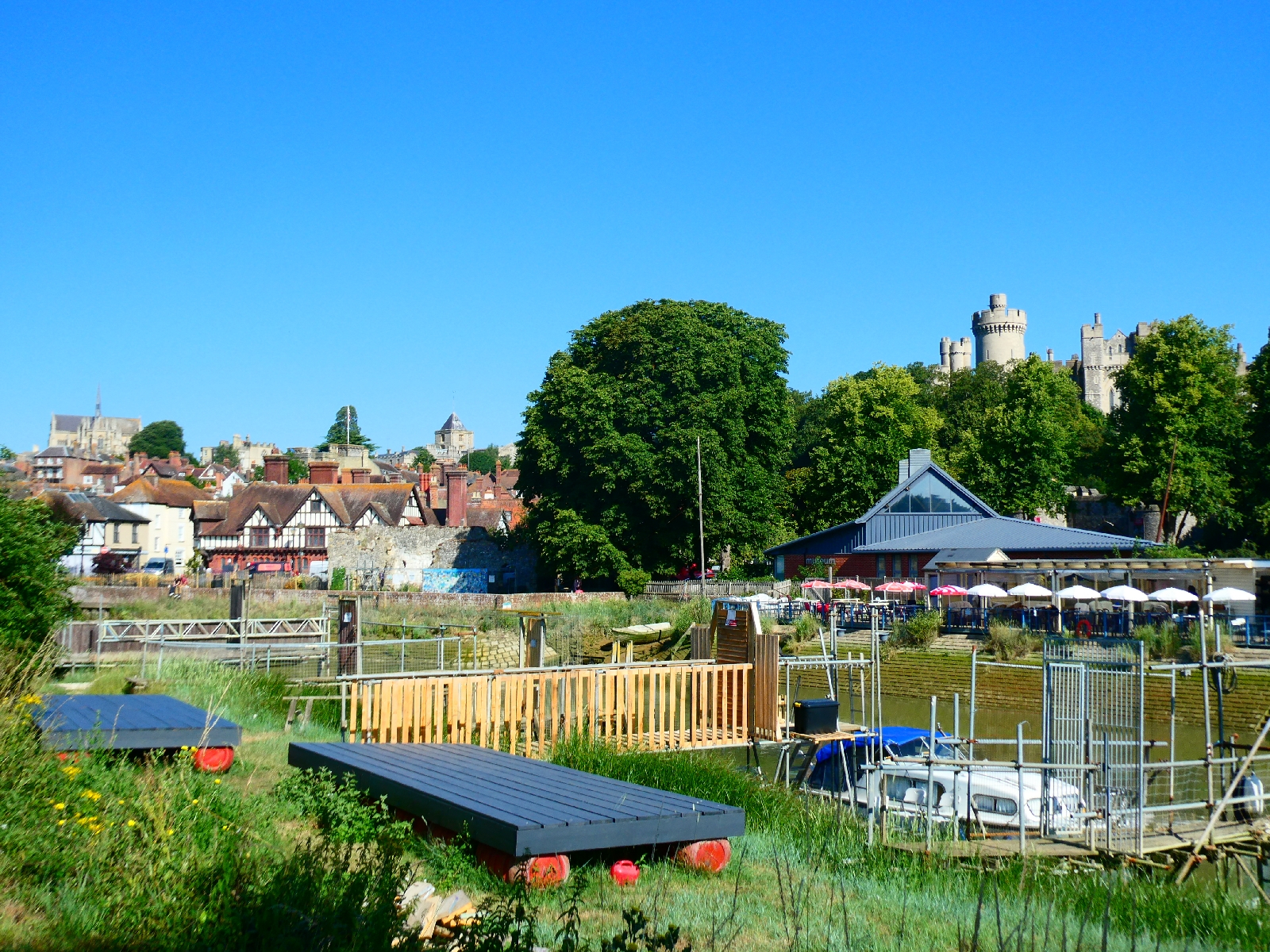



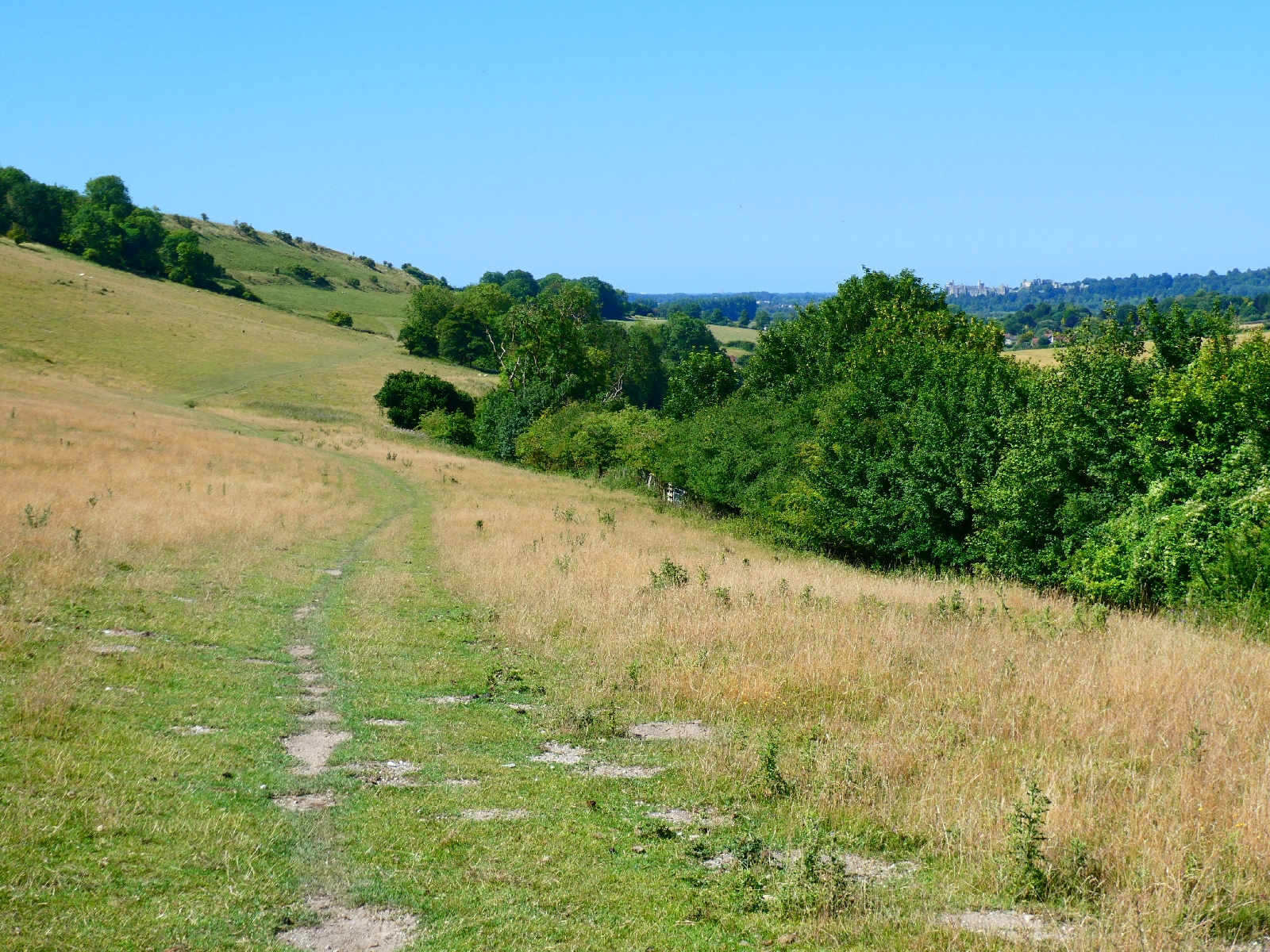
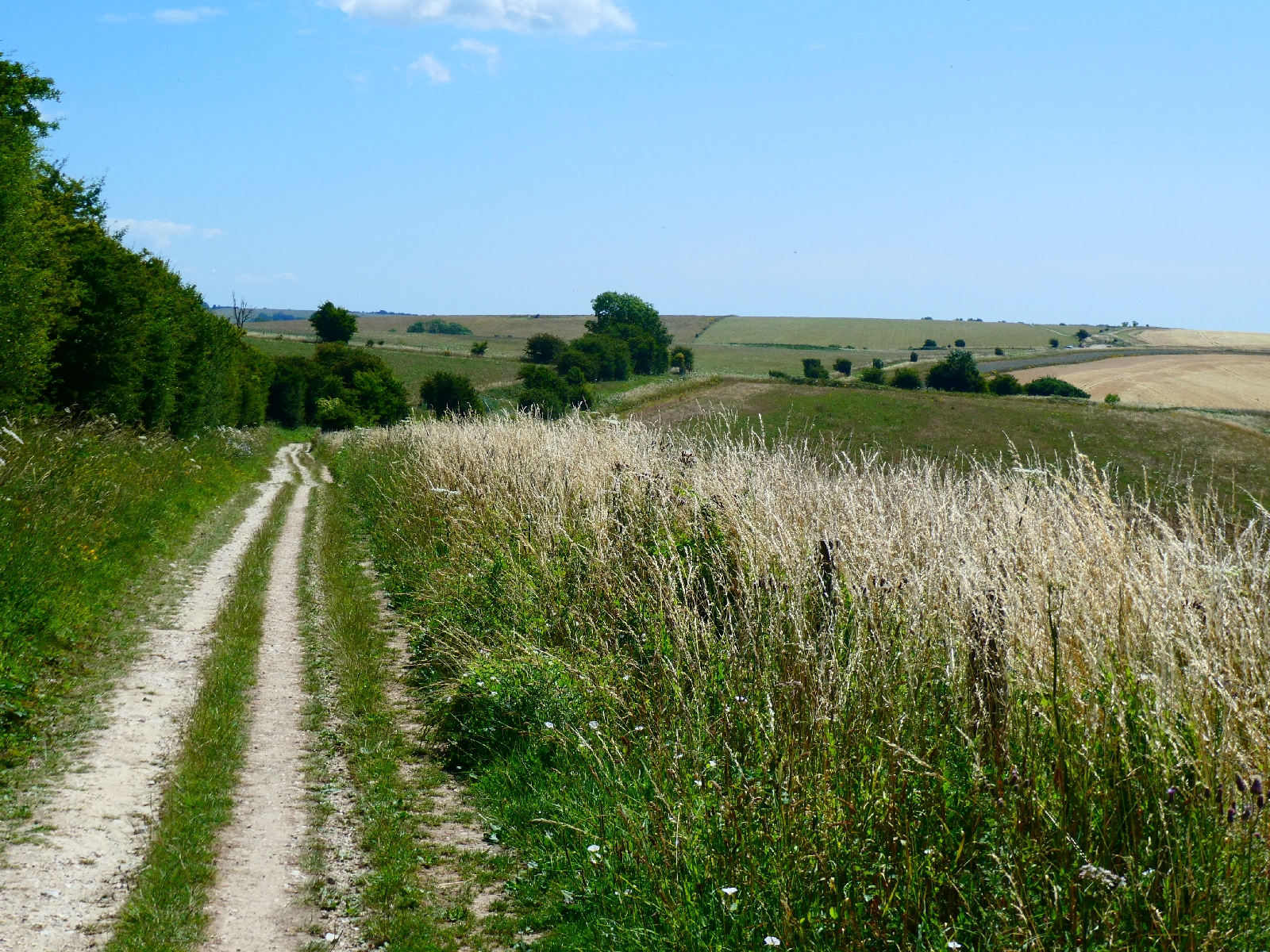


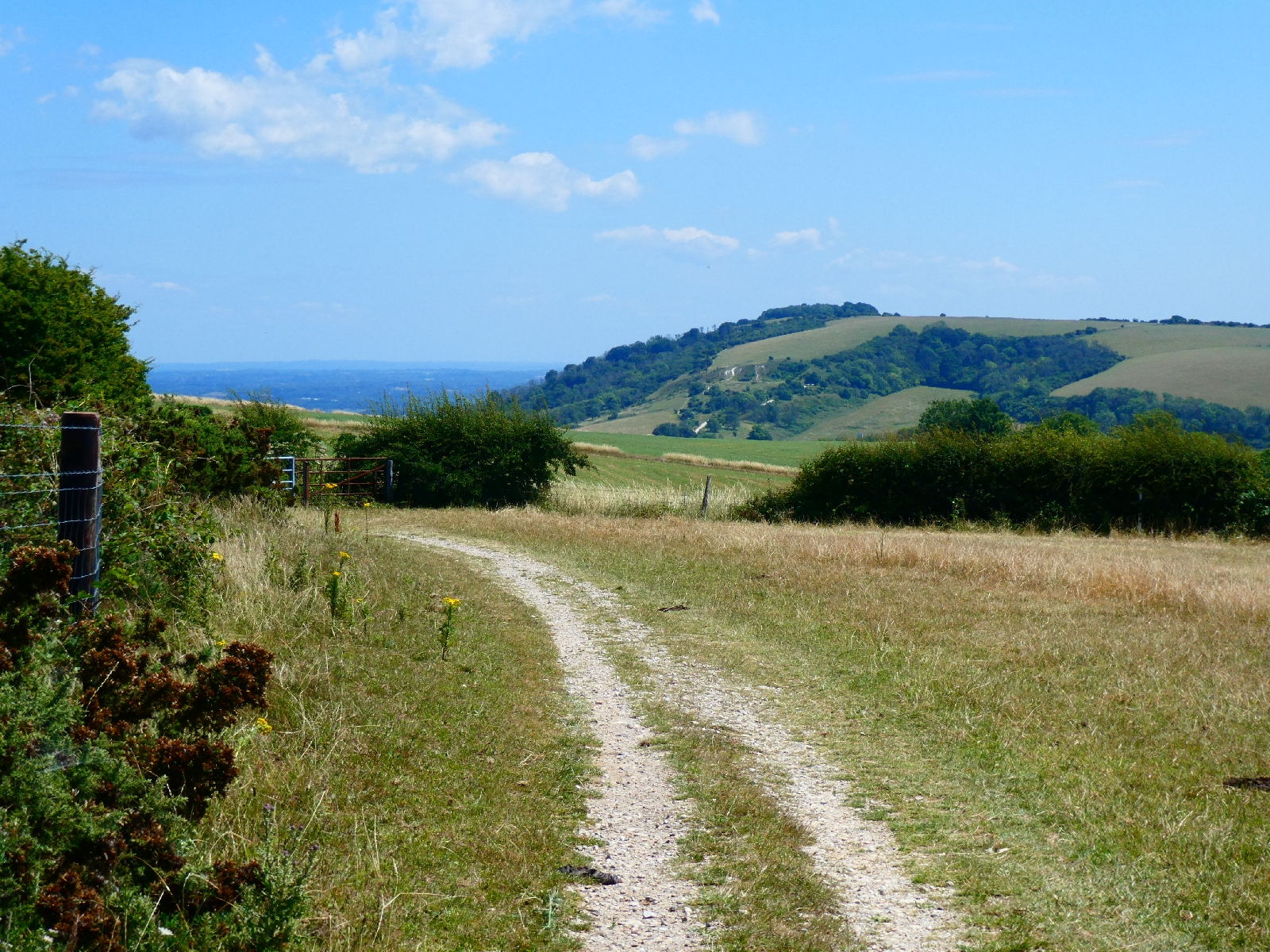
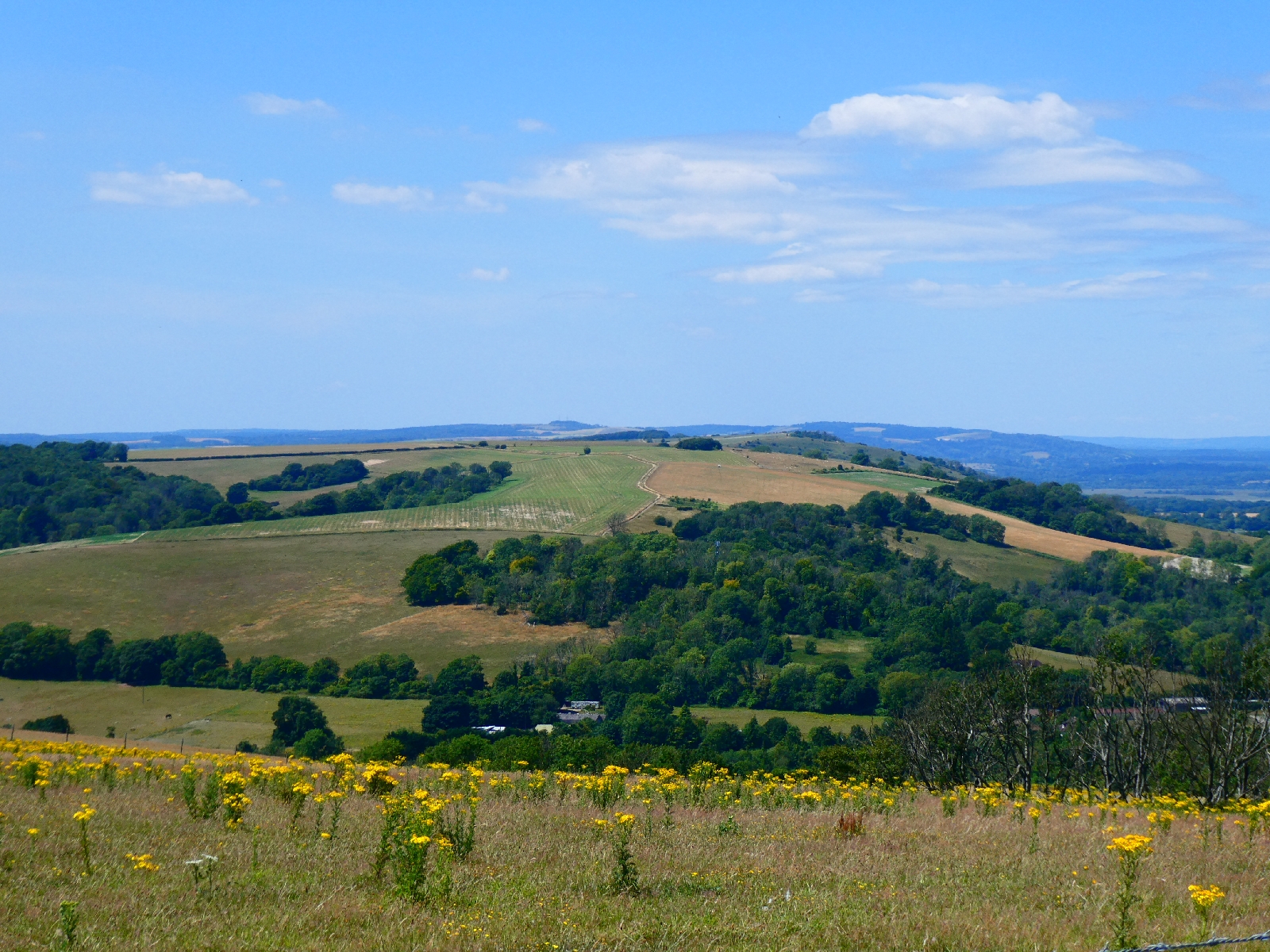




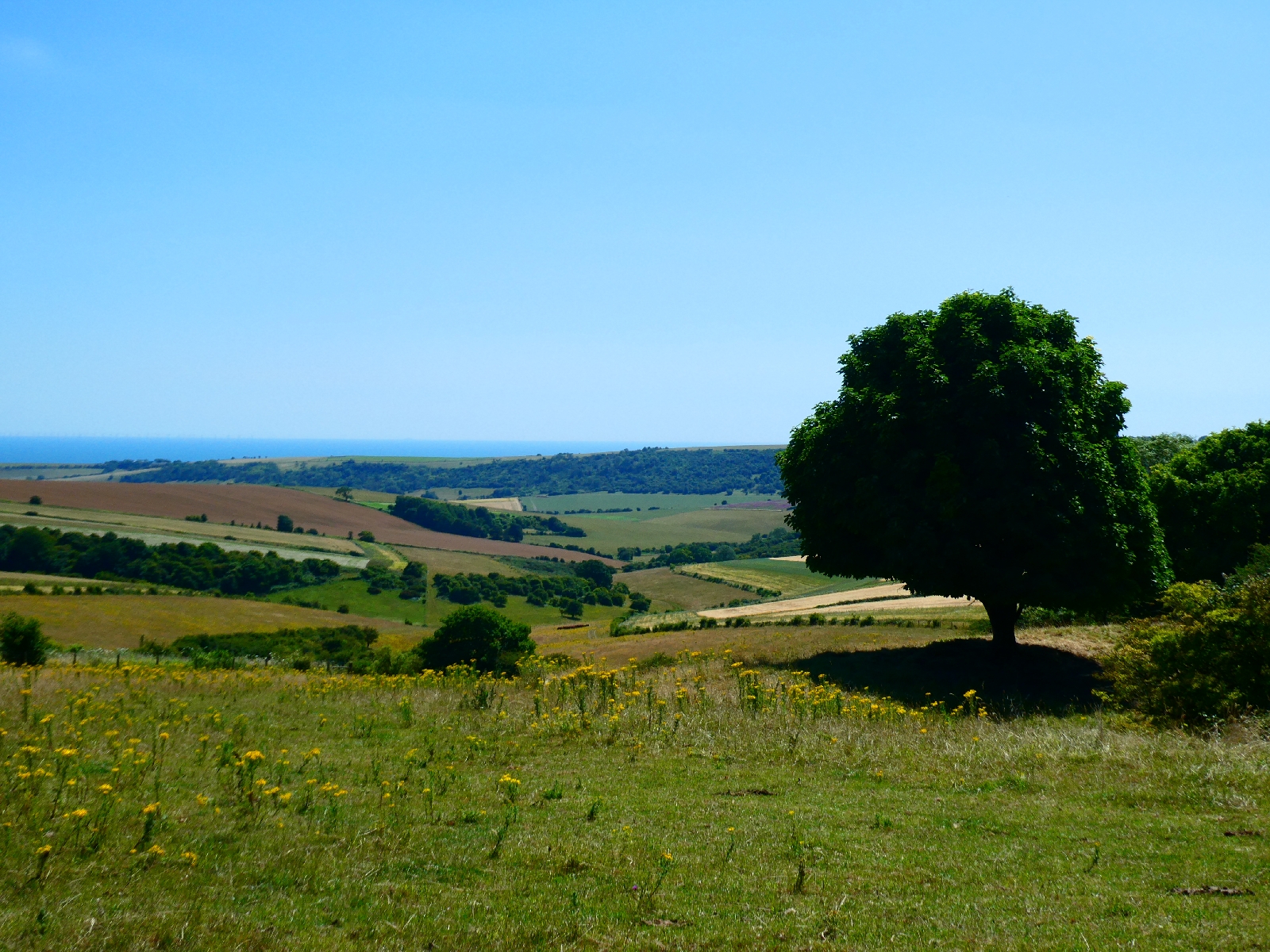


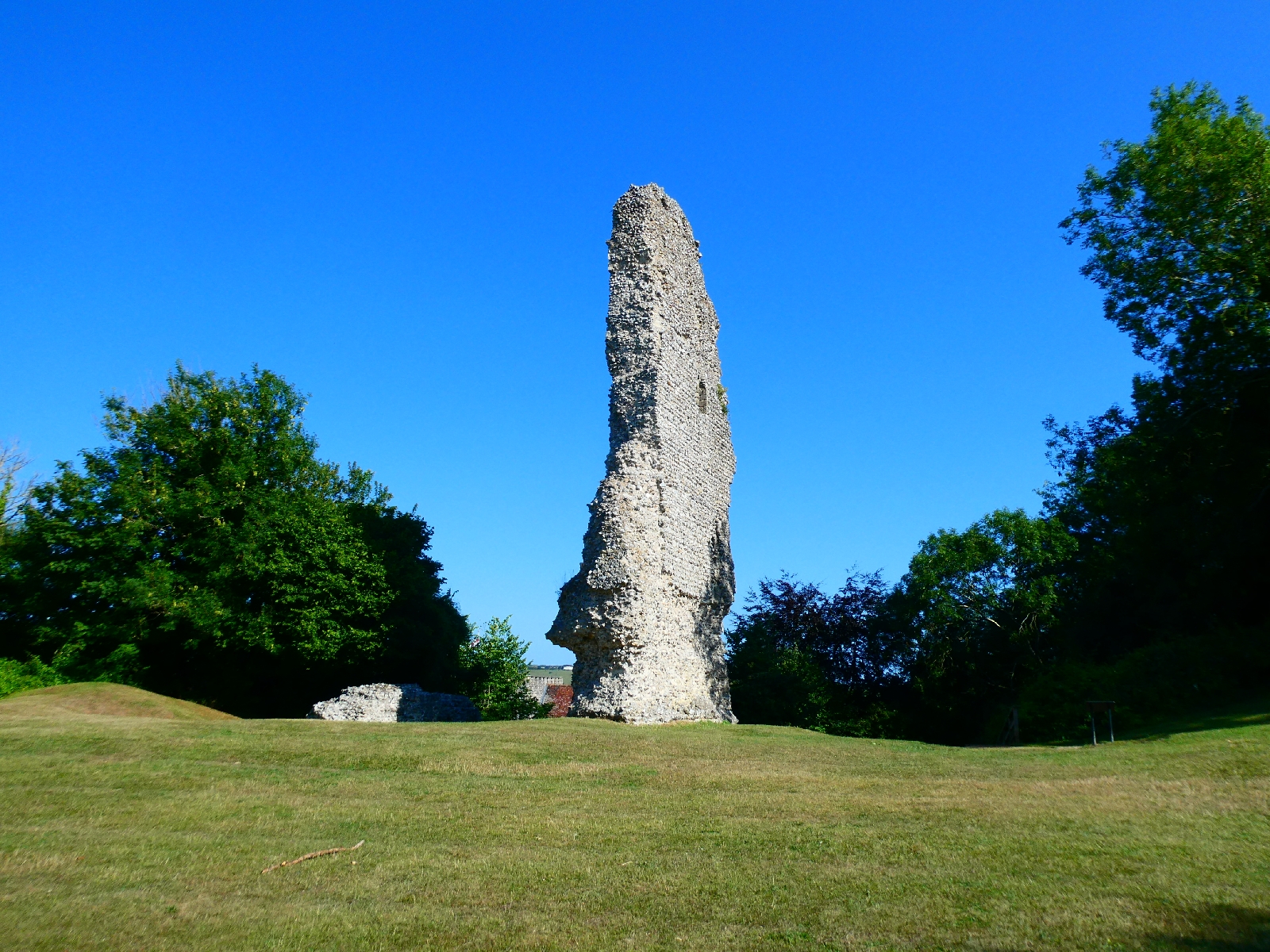
No comments:
Post a Comment